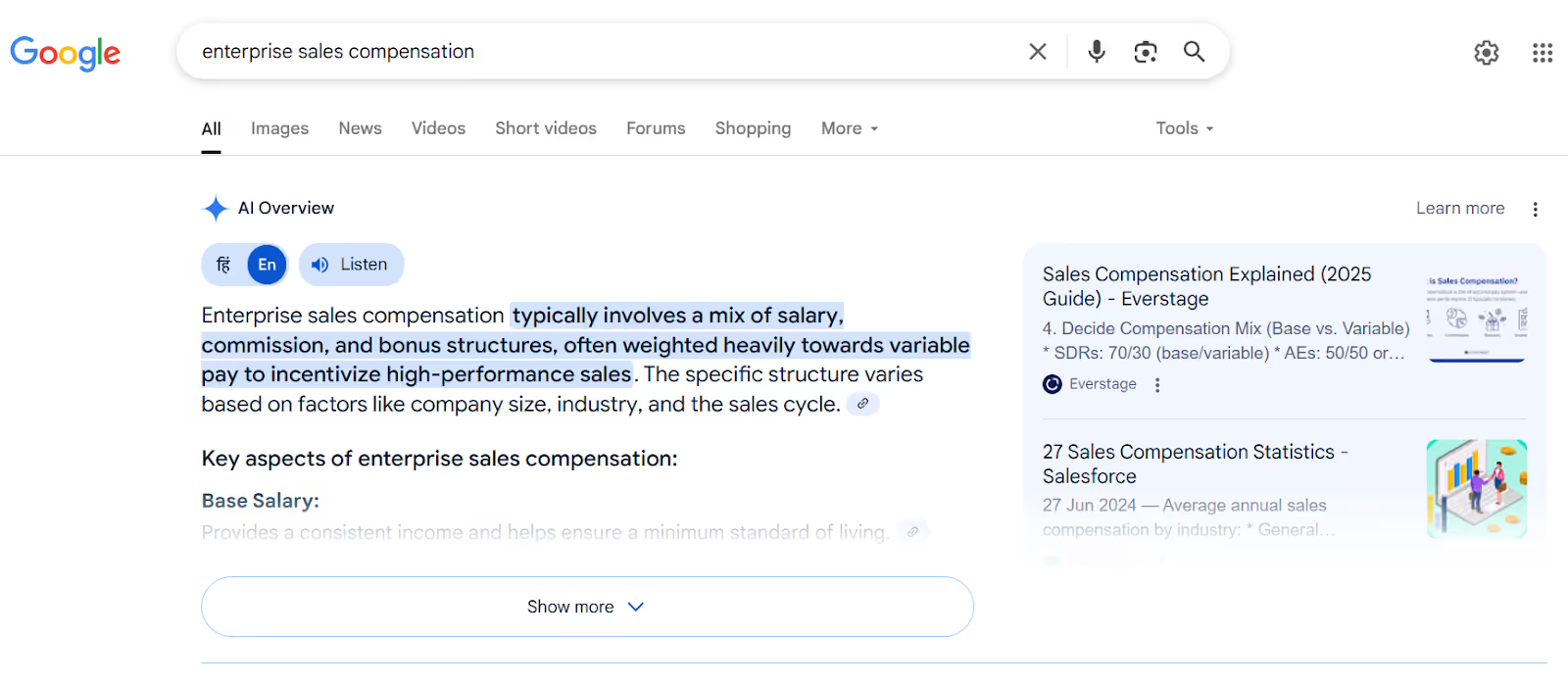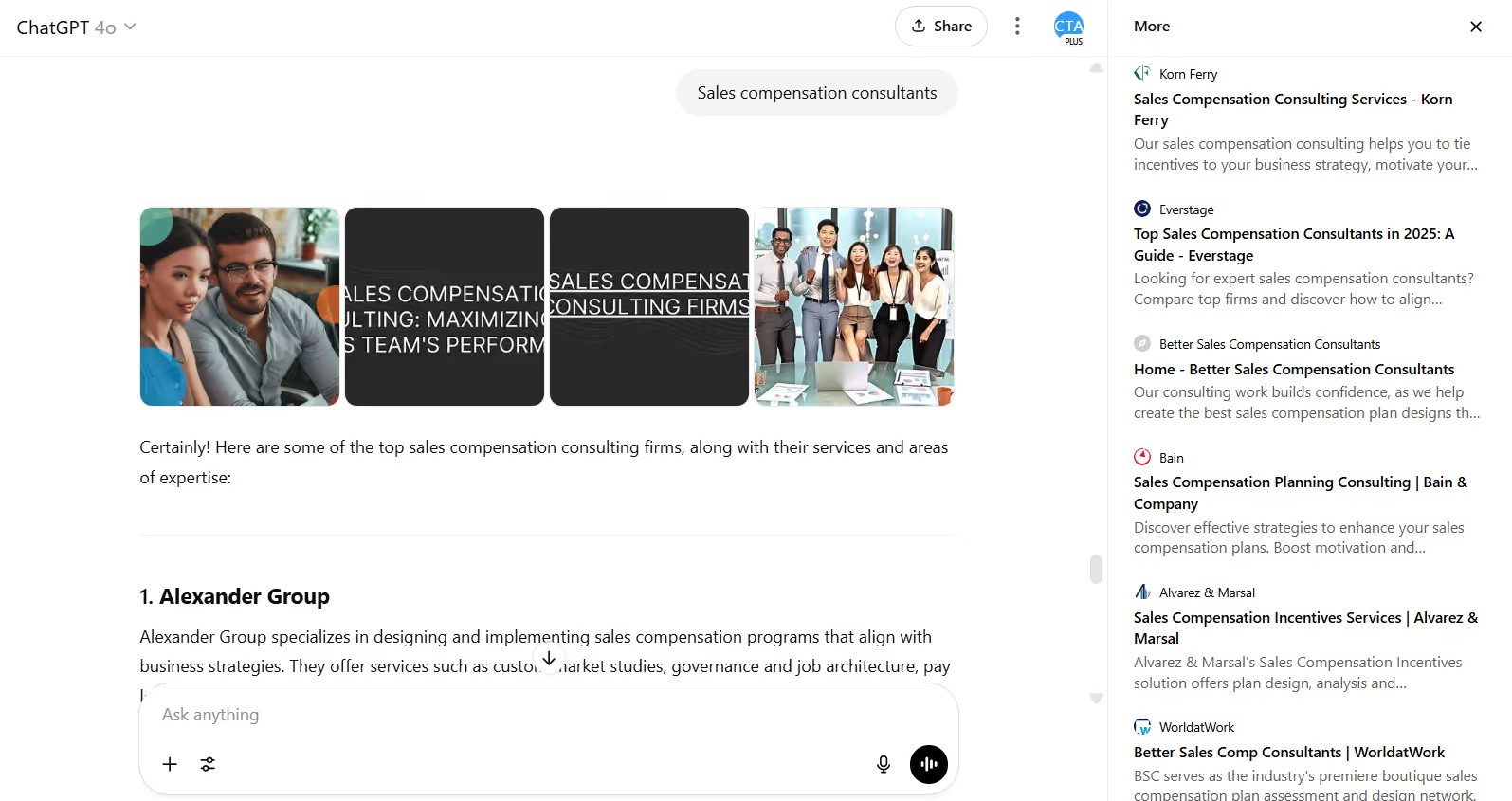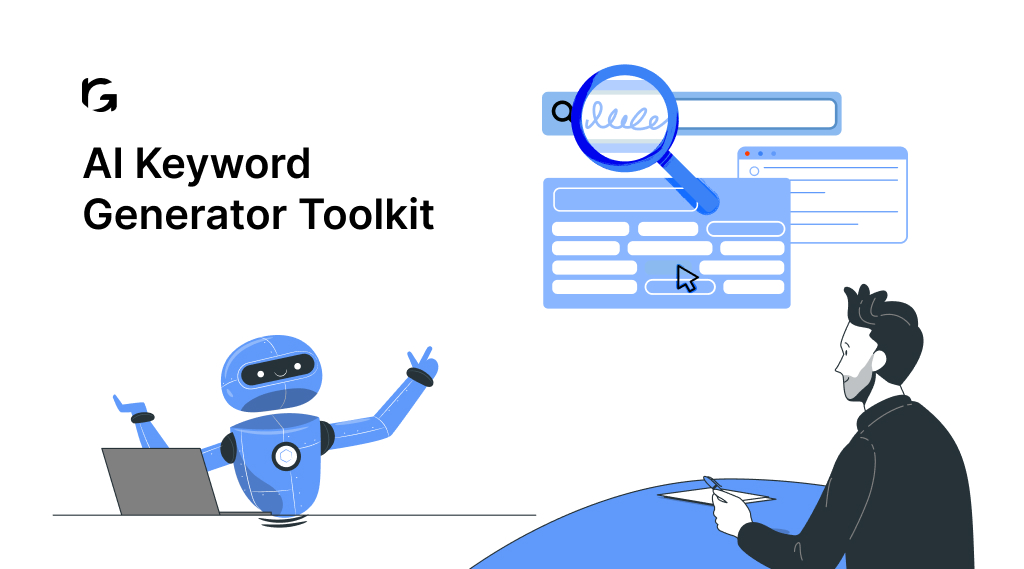Introduction
When ChatGPT went viral in late 2022, it felt like the content world had found its Iron Man suit. Writers, marketers, and founders were suddenly equipped with the power to generate polished paragraphs, clever headlines, and entire blog posts in seconds. Deadlines became easier. Budgets stretched further. Content calendars got filled at lightning speed.
But here’s the thing: even Iron Man needed Tony Stark inside the suit.
Fast-forward to today, and a new question is on every marketer’s mind: Is AI-generated content actually good for SEO? Can something written by a machine compete with human experience, expertise, and intent? Or will Google eventually sniff it out and knock it off the rankings?
In this blog, we’ll cut through the hype and take a grounded look at how AI content performs in real search scenarios. We’ll explore Google’s official stance, fresh SEO performance data, and actionable strategies to ensure your AI-powered content doesn’t just exist, but ranks, converts, and builds trust.
Is AI-Generated Content Good for SEO?
AI-generated content is good for SEO when it is helpful, original, and edited by humans. Google does not penalize content based on how it is created. It evaluates quality, relevance, and usefulness.
SEO rankings improve when AI content aligns with user intent and includes real experience. Poorly written, spammy, or generic AI content can harm visibility. Tools like ChatGPT can assist with structure, but human input ensures accuracy and trust.
The best results come from combining AI speed with human insight. Google's 2025 guidelines prioritise people-first, experience-rich content, regardless of whether it is AI or human-written.
According to Ahrefs' State of AI in Content Marketing report, 87% of the 879 marketers surveyed are already using AI to assist with content creation.

The most important takeaways:
- AI-generated content is not penalized by default. Google evaluates outcomes, not methods.
- SEO performance depends on content quality like clarity, originality, usefulness, and alignment with user search intent.
- Human input remains critical, especially in interpreting topics, offering insights, and maintaining credibility.
- AI should be used as a tool inside a larger editorial process, not as a full replacement for writers, strategists, or subject matter experts.
This distinction is vital for SEO teams under pressure to scale. When AI is treated as a co-pilot, one that structures first drafts or accelerates routine tasks, it can free up time for deeper strategy. But when AI content is published without refinement, it often falls short on the very signals that Google uses to evaluate helpfulness.
Now that we’ve addressed the question head-on, let’s examine what Google itself says about the use of AI-generated content.
Google’s Guidelines on AI-Generated Content SEO
As AI writing tools became mainstream, marketers and SEO teams were left wondering: Will Google penalize AI-written content? That uncertainty was addressed directly in Google’s February 2023 update, where they confirmed that what matters is the quality of content, not how it's made.
Google's Official Position (2023–2025)
Google’s approach to AI-generated content is rooted in a single principle: quality first. Whether your content is created by a human, a machine, or both, it needs to be:
- Helpful and people-first, not SEO-first fluff
- Accurate and original, not stitched together from scraped web data
- Published with editorial intent, not mass-produced to manipulate rankings
Here’s how Google evaluates content, AI or otherwise:
1. Helpful Content System
This system prioritizes pages that serve users first. If your content is genuinely informative, well-structured, and addresses real search intent, it can rank, regardless of how it was made. But if your content is shallow, repetitive, or designed only to attract clicks? It will likely be downranked.
2. Spam Policies and SpamBrain
Google's spam detection system, SpamBrain, identifies patterns of low-quality or manipulative content. Using AI to publish hundreds of thin pages to game search rankings is flagged as spam. But using AI to assist a well-defined editorial process? That’s acceptable.
3. E-E-A-T (Experience, Expertise, Authoritativeness, Trust)
AI content is held to the same standards as any other. On sensitive topics, like health, finance, or legal advice, Google gives higher visibility to content that shows human experience, domain authority, and trust signals. AI on its own typically struggles here unless it’s paired with real-world knowledge and citation.
In short, AI-generated content is not penalized for being AI-generated. What gets penalized is low-quality content, whether written by a person, a bot, or a bad freelancer.
Real SEO Data: How AI Content is Performing in Rankings
Google’s official stance is clear: “It’s not how content is made, it’s whether it’s helpful, original, and people-first.” This principle, outlined in Google’s 2023 Search Guidance on AI-generated Content, is consistently backed by performance data from industry leaders.
At Revv Growth, we’ve seen this play out firsthand. When working with clients like Everstage, we implemented an AI-human hybrid workflow that balanced speed with editorial depth.
We used tools like ChatGPT, Ahrefs, and Clearscope to generate structured, keyword-optimized first drafts and then layered in our human touch to align with brand voice, add original research, and optimize for SEO.
The result? Blogs that now rank not only on Google but also show up in ChatGPT answers, AI Overviews, and platforms like Perplexity AI.



Also, between 2023 and 2025, multiple studies have shown that AI-generated content performs best when enhanced by human oversight. Here's what the numbers say:
- HubSpot’s 2024 Web Strategy Survey – 46% of marketers said AI-assisted content ranked higher, 36% saw no change, and 10% saw lower rankings. That’s a drop from 65% in 2023, but highlights the importance of quality and review.
- Clearscope case studies report a 52% increase in organic traffic on content optimized with its tool, which combines AI insights with editorial oversight.
- Surfer SEO’s internal data highlights the risks of AI‑only content: while their AI writing tool accelerates content creation, standalone AI drafts often lack nuance, correlation scores show low content-to-ranking impact, and unbalanced use can lead to ranking dips.
- Ahrefs Study highlights that pages ranking at #1 tend to have lower AI proportions, especially within the 0–30% AI usage range. Ahrefs notes this is a pattern, not a firm rule, but it suggests that very high-ranking content leans more on human involvement.

Why does hybrid content perform best?
- Editorial oversight bridges gaps in tone, accuracy, and structure AI is fast, but not always nuanced.
- Human-AI collaboration delivers scale and precision while retaining originality and brand authority.
- Pure AI content tends to lack depth, overuse generic phrasing, and struggle with aligning to search intent, especially in high-E-E-A-T categories like health, finance, and legal.
These findings validate Google’s position: the method of creation matters less than the end result. Whether content is written by a machine, a person, or a combination of both, what ultimately ranks is content that:
- Answers the user’s query with depth and clarity
- Demonstrates topical expertise and trustworthiness
- Avoids thin, repetitive, or unoriginal phrasing
We've applied this hybrid model across dozens of our own long-form blogs at RevvGrowth, using AI for outlines and repetitive sections, but leaning heavily on human-led insights, narrative tone, and data curation.

It’s what helps our blogs not only rank but also show up in AI Overviews across tools like ChatGPT and Perplexity.
So, while AI-generated content offers tremendous efficiency, it must be paired with human strategy and editing to meet modern SEO standards.
AI vs Human-Written Content for SEO: A Quality Comparison
As AI-generated content becomes more common, marketers are asking: Can it truly match the quality of a well-written human article? The answer depends on what kind of content you're creating and what your goals are.
Let’s compare AI-generated content and human-written content across six key dimensions that impact SEO performance:
.avif)
The bottom line? AI content can be fast, structured, and scalable, but it still needs human intervention to shine.
As Josh Blyskal from HubSpot puts it, "Now, more than ever, the value of content hinges on the authenticity of its creator and the underlying value, meaning, story, and perspective of the content they're creating.”
When you're aiming for authority, originality, or nuanced storytelling, human-written content holds the edge. The best-performing SEO strategies combine both: letting AI handle the groundwork, while humans refine, elevate, and align the content with brand and search intent.
But what happens when you rely too heavily on AI with no human layer? That’s where quality and rankings can start to suffer.
SEO Gaps Commonly Seen in AI Content
Even though Google doesn’t penalize content just because it’s AI-generated, it does penalize content that feels low-quality, thin, or spammy. Here are some of the most common SEO pitfalls we’ve observed in AI-generated content:
1. Keyword Misuse: Overstuffing or Under-Optimization
AI tools can’t always grasp context or user intent. This often leads to:
- Repetitive keyword use that feels robotic or forced
- Awkward phrasing designed to fit a term exactly
- Missed opportunities to naturally incorporate secondary or semantic keywords
This can trigger Google’s spam filters or worse, turn off readers.
2. Generic and Repetitive Language
Many AI tools fall into the habit of using safe, templated phrasing like:
"In today's fast-paced digital world, content is king."
This might sound okay once, but scaled across hundreds of pages, it reduces engagement, increases bounce rates, and tells Google your content lacks originality.
3. No Lived Experience or Real Insight
AI lacks personal perspective, case-specific data, or emotional context. This becomes a problem in YMYL (Your Money or Your Life) categories like:
- Finance: Where people look for advice from licensed professionals
- Healthcare: Where misinformation can have serious consequences
- Legal: Where precision and authority matter
Without quotes, citations, or author expertise, AI-written content in these areas can fail E-E-A-T guidelines, making it unlikely to rank.
4. Duplication and Thin Originality
While AI may not directly copy existing content, its outputs are based on patterns from existing web data. This can lead to:
- Overlapping sentence structures and phrasing across multiple pages
- Content that feels derivative or indistinct from competitors
- Internal duplication risks across your own blog or site
Google’s algorithms detect and devalue content that seems mass-produced or low-effort, even if technically original.
5. Lack of Local and Contextual Relevance
AI often misses subtle yet critical cues for:
- Local SEO: Think region-specific slang, cultural references, or business nuances
- Tone of voice: Adapting to different audience personas or campaign goals
- Industry-specific jargon: Which can confuse or alienate target readers
For example, an AI might write “digital banking in the US” in the same tone for a UK or Indian audience, missing legal, cultural, or product context.
Here’s a real-world style comparison:
AI-Generated Intro:
"Search engine optimization is important for websites because it helps improve visibility and reach a larger audience."
Human-Edited Version:
"If your content can’t be found, it can’t perform. That’s the role of SEO, making sure the right people find your content at the right time.”
The second version is more engaging, specific, and aligned with audience understanding, something AI still struggles to replicate.
AI tools shine when you need to move fast, drafting outlines, generating content variations, or scaling informational pages. But when it comes to building credibility, originality, and depth, human writers still have the upper hand.
Where AI Content Works and Where It Doesn’t
AI has come a long way in helping content teams do more with less. But its performance varies widely depending on the type of content you're creating.
Here’s how to know where to deploy AI and where to rely on human expertise.
Best Use Cases for AI (with Human Oversight)
AI-generated content works well when the content format is predictable and the stakes are low. With proper editing, it can be a huge time-saver in:
- How-to guides and listicles: Especially for generic or evergreen topics
- FAQ pages and glossary content: Ideal for volume creation across keyword clusters
- Meta descriptions and product specs: Structured, concise, and repeatable formats
- Programmatic SEO at scale: For example, generating landing pages for multiple cities or product variants
In these contexts, AI boosts productivity without sacrificing quality, provided there’s a human layer for review.
Poor Use Cases for AI (without Human Editing)
When content requires personal experience, high accuracy, or a unique voice, AI often falls short. Avoid relying on AI-only outputs for:
- Product reviews and experience-led comparisons: Google expects actual use, not paraphrased summaries
- Editorials and thought leadership: AI struggles to offer fresh, opinionated takes
- YMYL topics (Your Money or Your Life): Think finance, medical, or legal advice, where expertise, fact-checking, and trust are non-negotiable
- Brand storytelling and creative copywriting: Tone, emotional impact, and narrative structure still require a human touch
Publishing unedited AI content in these categories could harm both your credibility and your rankings.
Now that you know when and how to use AI for content creation, let’s break down the exact workflow for using it safely without hurting your SEO rankings.
How to Use AI Content Without Hurting SEO
AI content can be a valuable part of your SEO strategy if you use it right.
Too many marketers treat AI as a “set-it-and-forget-it” tool. But in reality, using AI without oversight can lead to content that sounds generic, lacks accuracy, and fails to meet Google’s quality standards.
Here’s a repeatable, step-by-step framework for using AI-generated content in a way that protects and even boosts your SEO performance.
1. Use AI for Drafting Structure and Ideas
Start by using AI tools like ChatGPT or Gemini to build outlines, draft first-pass content, or generate variations of standard sections (e.g., FAQs, introductions).
AI can quickly:
- Suggest blog titles and angles
- Generate a working structure (H1, H2, H3s)
- Fill in common knowledge or repetitive copy
Pro tip: Use prompts that mirror your content goals (e.g., “Create a blog outline targeting the keyword ‘AI for SEO strategy’ in a conversational tone”).
2. Edit Thoroughly for Tone, Accuracy, and Depth
This is where many teams fail.
Even well-written AI content can include outdated facts, awkward transitions, or off-brand language. At RevvGrowth, for both client and internal content, we build editing into the process from the start. Every AI-generated draft is reviewed for:
- Tone alignment: We rewrite awkward transitions and refine phrasing to match each brand’s unique voice.
- Factual accuracy: Our editors verify every stat or claim, often adding insights from trusted sources like McKinsey, Gartner, or internal client data.
- Flow and clarity: We restructure weak intros, tighten conclusions, and ensure every section builds logically.
Tools like Grammarly (for grammar), Writer.com (for brand tone), or Hemingway (for readability) can support grammar or readability, but they’re no replacement for trained human editors who understand your niche and audience.
3. Add Real Human Insight
AI cannot invent lived experience or original thinking. Add:
- Expert quotes or perspectives from your team or industry
- Personal anecdotes, stories, or first-hand data
- Internal research, proprietary examples, or case studies
This step is critical, especially for YMYL topics or bottom-funnel content that requires authority and trust.
Take our own ABM tools blog. Beyond AI assistance, what makes it rank in Google and AI Overviews is that we bring unique editorial analysis, peer comparisons, real user reviews, and voice, something only humans can add.
4. Optimize for On-Page SEO
Now that your content has substance, it’s time to optimize it for discoverability.
- Place your primary and secondary keywords naturally in headings and body text
- Add internal links to relevant blog posts or product pages
- Use clear headers, short paragraphs, and bullet lists for better readability
You can use tools like:
- SurferSEO or Clearscope – for real-time SEO scoring and keyword placement
- NeuronWriter – to match content against top SERPs and NLP-driven terms
Don’t let AI-generated copy pass without a manual SEO layering. Google rewards thoughtful optimization, not automation.
5. QA and Publish with SEO Hygiene
Before hitting publish, do a final review:
- Run a manual QA pass for typos, coherence, and UX
- Add meta title, meta description, and schema markup where applicable
- Attribute authorship correctly, use a real writer or editor’s name
- Check for plagiarism or excessive similarity to existing content
This final polish ensures your AI-assisted content aligns with Google’s expectations for transparency and quality.
Final Verdict: Should You Trust AI-Generated Content for SEO?
AI has changed the content game, but it hasn’t replaced the fundamentals of good SEO.
Yes, AI tools can generate drafts at record speed. They can help you scale content, fill out topic clusters, and stay consistent across your site. But if your goal is to rank, convert, and build brand trust, AI alone isn’t enough.
The most effective SEO strategies today don’t choose between AI or humans. They combine both. Use AI for ideation, scale, and structure. But layer in human insight, editorial quality, and real experience to make your content truly rank-worthy.
Looking to integrate AI into your SEO strategy the right way?
At RevvGrowth, we help growth-stage companies use AI without compromising on quality, rankings, or brand trust. From scalable content ops to human-led editing frameworks, we build systems that make AI work for your SEO, not against it.
Book a free strategy call with our team to see how AI + human expertise can drive your content results in 2025.
Let’s make your AI-powered content your highest-ranking asset.



.svg)



.webp)